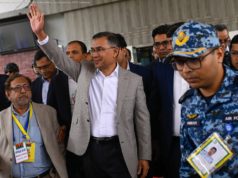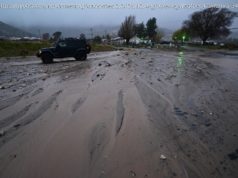Progress on North Korea is achievable — but the priority should be to make things no worse.
President Donald Trump says he’s meeting Kim Jong Un this week to win “complete, verifiable and irreversible” denuclearization of North Korea. He won’t get it — but that doesn’t mean the venture is doomed to fail. A bargain short of that goal might still count as success, and not just according to the White House.
A problem that’s bedeviled the past three U. S. presidents won’t be solved with a single tete-a-tete. Kim’s priority is the survival of his regime, and he probably calculates that, for now, retaining his nuclear weapons in some form is vital for that purpose. Instead, ask two questions of any deal struck in Singapore. Does it reduce the short-term threat? And does it open a path to rolling back Kim’s nuclear arsenal in future?
The first step, before the U. S. agrees to any further talks, should be to slow the progress of Kim’s weapons programs. His voluntary pause in nuclear and missile tests should be codified and extended, with measures put in place for monitoring compliance. The U. S. should also insist on an immediate halt to the reprocessing and enrichment of fissile material, and a continued ban on North Korean exports of nuclear or weapons technology — again, with measures to assure compliance. Even if these steps were later reversed, they’d delay the North’s ability to field a reliable nuclear-missile force.
Next, the U. S. should demand a firm, short timeline to cap all elements of the North’s strategic arsenal. Stocks of warheads and fissile materials should be declared and inspected. The same goes for missile launchers and for the North’s most dangerous missile technology — long- and intermediate-range ballistic missiles, solid-fueled rocket engines, and the submarine-launched missiles thought to be under development. At least some warheads should be dismantled and fissile material transferred out of the country. This would allow the U. S. to pocket some initial gains in case Kim drags his feet in later negotiations.
It’s true that this phased approach would leave North Korea with most of its current arsenal for the time being. But completely dismantling the program would take a long while anyway — maybe 10 or 15 years, according to well-placed experts.
A hard cap plus effective inspections would allow negotiators to work out a realistic timetable for complete denuclearization, which would involve reassigning thousands of weapons scientists, destroying missiles, decommissioning nuclear and enrichment facilities, and more. It would also allow time to equip the International Atomic Energy Agency, which currently has nowhere near enough inspectors to cover North Korea. In the meantime, the threat posed by Kim’s regime would have been substantially reduced.
What the North should receive in return also needs careful judgment. If Kim makes temporary revocable concessions, such as a testing freeze, he should get equally reversible benefits in return: scaled-back U. S. military exercises on the Korean peninsula, for example, humanitarian aid, or suspension (not elimination) of some United Nations sanctions.
Declaring an official end to hostilities, which Trump seems eager to do in Singapore, may serve some symbolic value. But ending sanctions and restoring diplomatic relations should await substantive actions from Kim on all elements of the North’s rogue behavior — including its human-rights abuses, cyberwarfare, chemical and biological weapons, drug-dealing, and counterfeiting.
The U. S. should coordinate all this with China. Both sides need to agree that violations would trigger a full “snap-back” of international sanctions. At the same time, the U. S. needs to stay mindful of its larger strategic position in Asia. Trump’s hunger for anything he could call a big win shouldn’t lead him to concessions — such as withdrawing U. S. forces from South Korea — that would dramatically bolster China’s regional position and cause U. S. allies to panic. If Japan and South Korea feel abandoned, they may seek their own nuclear deterrents.
North Korea presents an extraordinarily difficult challenge. Progress this week is possible — but Trump should resolve, at least, to make the situation no worse.
—Editors: Nisid Hajari, Clive Crook
To contact the senior editor responsible for Bloomberg View’s editorials: David Shipley at
davidshipley@bloomberg.net
.






